Folimanka can be reached by foot from metro stop IP Pavlova, or for those averse to walking, by the 6 or 11 tram to Pod Karlovem. It also connects on its northern side to the aptly named Zahrada Ztracenka (Lost Garden) as well as the seldom-used Bastion XXXI park hidden in restored sections of the old city walls.
PARTNER ARTICLE
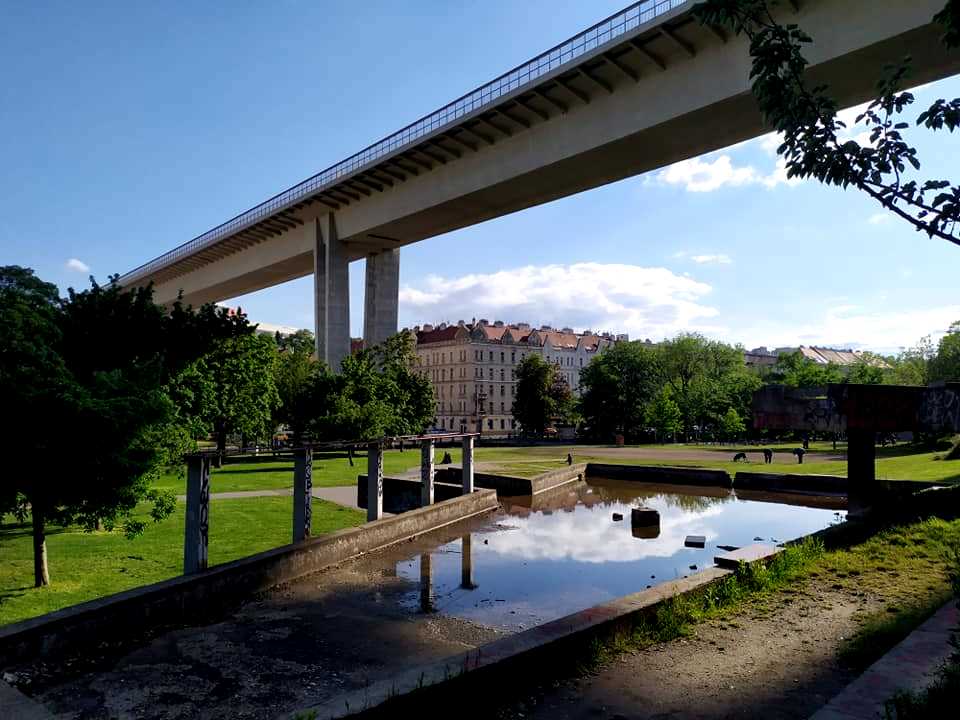
Of all the parks that are easily accessible from the city center, Folimanka has the most local flavor. Like many Prague parks, it got its start as a vineyard and was later converted. Despite some recent renovations in 2007, the park retains a 1980s feel due to the surrounding architecture.
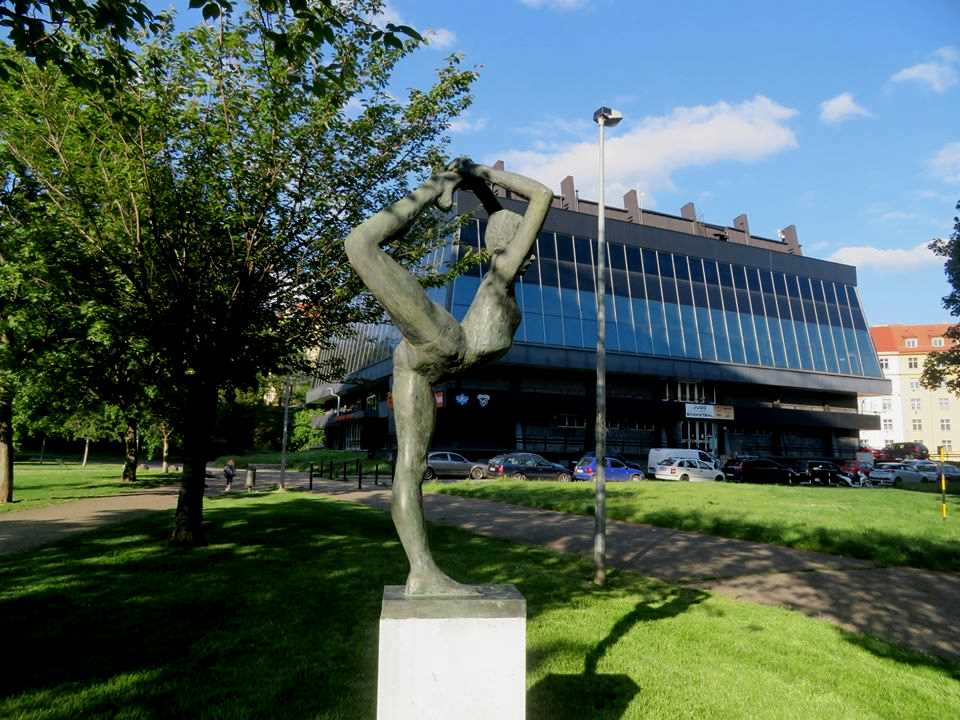
The plain concrete Nuselský most (Nusle Bridge), opened in 1973, runs high over the park, while east entrance is marked by the Brutalist-style Sportovní hala Folimanka (Folimanka Sports Hall), built in 1972–76 by architect Jiří Siegel, It is currently used by amateur sports clubs, mainly basketball, but in the past hosted concerts.
The sports hall was a big budget project, and under communist-era laws up to 4% of the construction budget had to go to public art. This went to several sculptures found nearby.
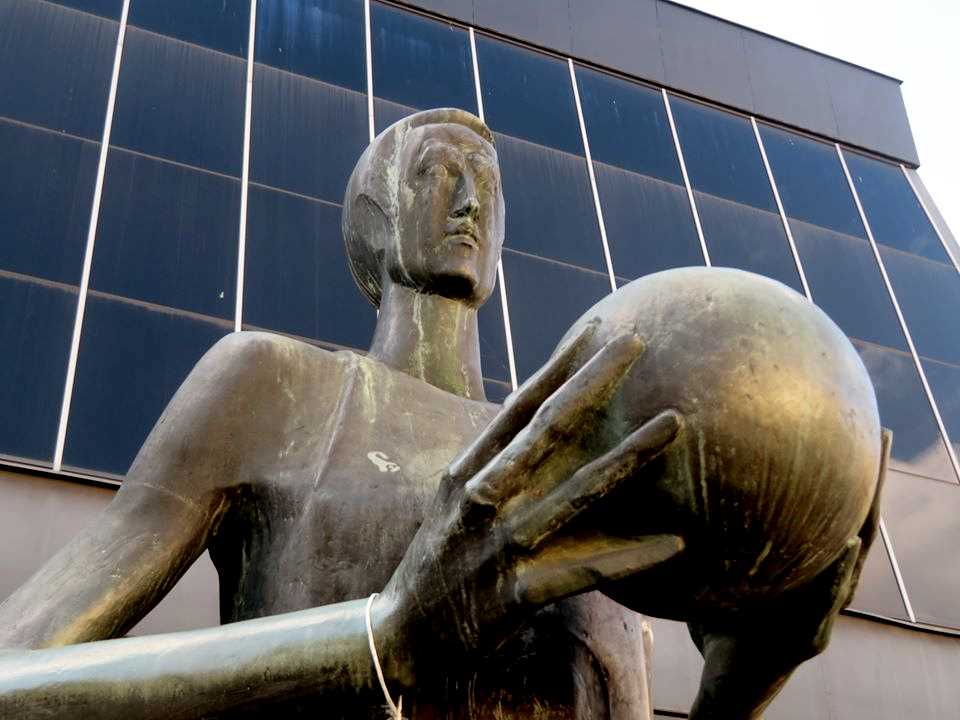
In front of the hall is a tall bronze sculpture by artist Zdeněk Němeček called Soustředění (Concentration), showing a baskeball player about to take a shot. Němeček, whose sports sculptures can also be found at Strahov and Výstaviště Holešovice, was a true believer in communism. He died in 1989 by his own hand.
A little bit behind the hall is the 1981 bronze sculpture called Gymnastka by Václav Frydecký, another sports-themed work typical of the Normalization era showing a young woman bent into a difficult pose.
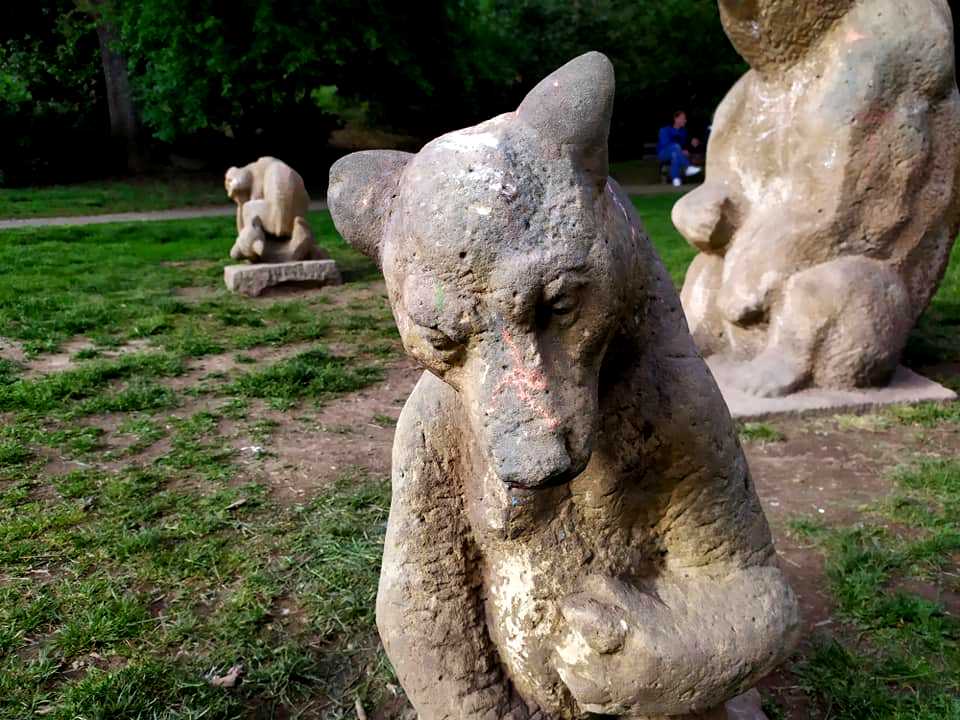
The same sculptor made a sandstone grouping of three bears called Mědvědí rodina (Bear Family), dating to 1976. Unfortunately it is often vandalized with paint, which is hard to remove from sandstone, but in the winter people have been known to give the bears warm scarves and hats.
On a path leading up into the higher section of the park is another bronze work, Svlékání (Undressing) from 1982 by Jiří Kryštůfek. The same sculptor made Girl With a Dove at náměstí Míru. Svlékání, showing a young girl taking off her dress over her head, is in a somewhat overgrown and isolated area of the park and in its current context is perhaps a bit creepy.
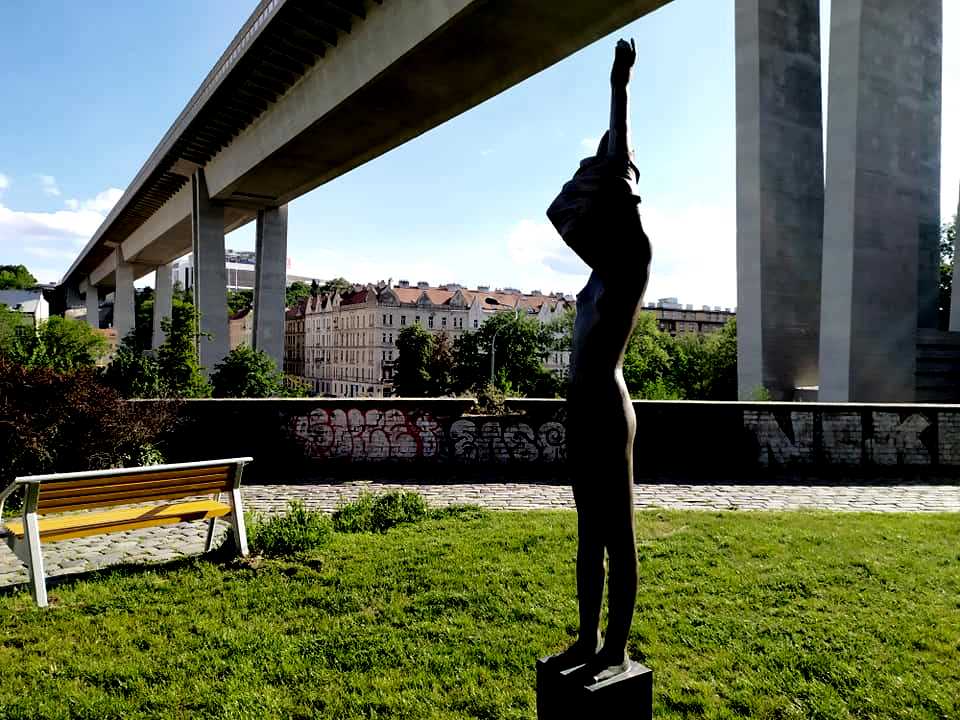
Originally, a concrete waterfall was underneath her and she appeared to be getting ready to go for a swim. The now-dry waterfall is in very poor condition, and two sculptures of children from 1981 by Bohumil Zemánek that were part of it have vanished. Repairs are no longer planned and the fate of the missing statues in unknown.
Faring better, though, is a fountain called Tři (Three) in the playground area, with bronzes of three children — Fanda, Julie and Milouš — playing in the water. The figures date to 1975 and are also by Bohumil Zemánek.
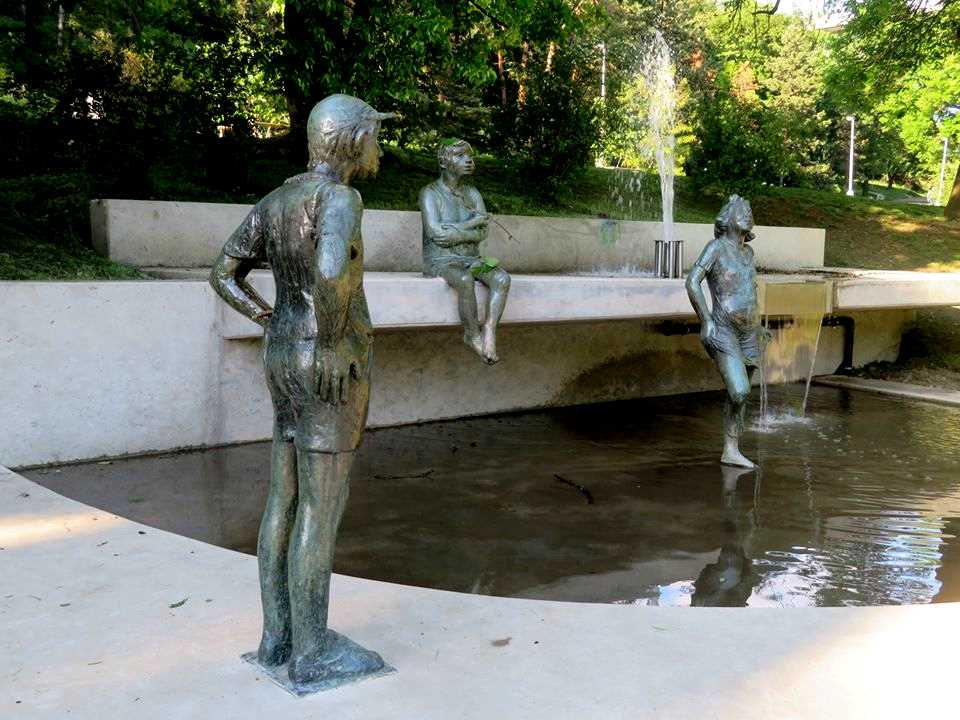
The fountain part comes from the 2007 renovation, when the playgrounds were modernized. The fountain is a bit different than the original due to the change in the playground layout.
The 2007 renovation created new areas to play sports, both for adults and children, and a stand that sells Ferdinand beer and snacks. Seating by the stand is limited, but the nearby benches and fields provide ample space to sit and relax.
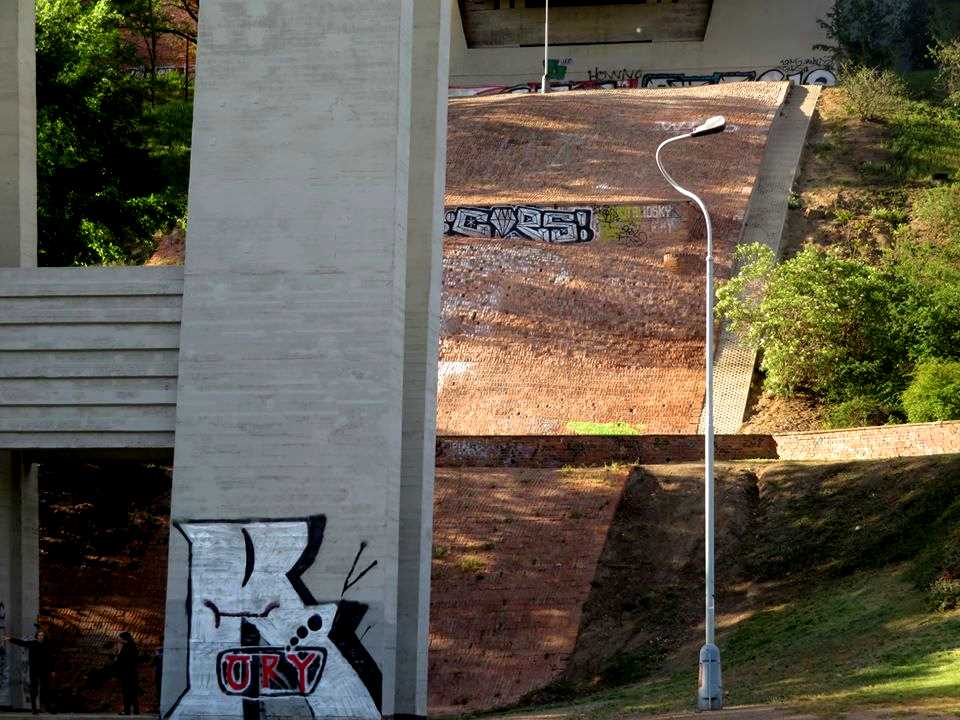
There is also a modern sculpture of sorts, but very easy to overlook. Z vlastního rozhodnutí – Memento mori (At Their Own Discretion – Memento mori) is a street lamp with the upper part twisted and the lamp pointed up to light the sky, below the Nusle Bridge.
It was made in 2011 by modern artist Krištof Kintera, and acknowledges the people who took their own lives by jumping from the bridge above. Some 250 to 350 people are thought to have jumped from the bridge, which now has high curved barriers to prevent this. Some local politicians opposed the sculpture based on its topic.
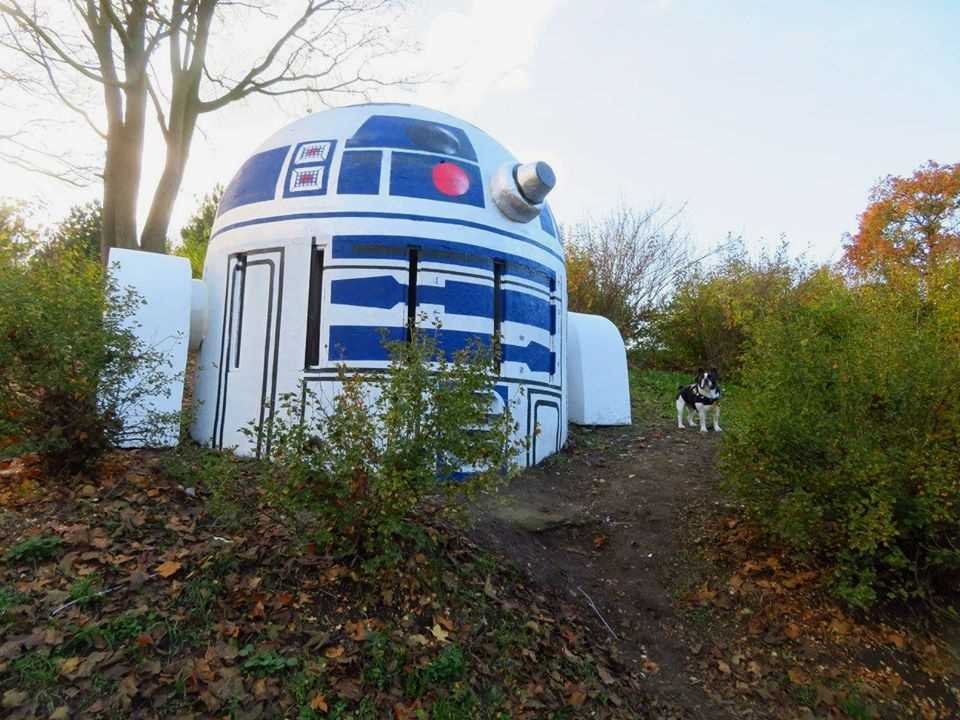
A later “sculpture” was a bit of guerrilla street art, and unfortunately has now been vandalized. Some street artists anonymously painted one of the air vents for an anti-nuclear fallout shelter to look like R2D2 from the Star Wars film series. It is in the upper part of the park, leading down from Lublaňská Street. Near here, close to the Pod Karlovem tram stop, there is also a small monument to victims of World War II.
The air vents are a clue to the park’s hidden treasure: The anti-nuclear shelter, the existence of which was a secret throughout the Cold War. Now, Kryt Folimanka is usually open to the public once a month for free, though the coronavirus restrictions have canceled a few tours. They will resume when conditions allow.
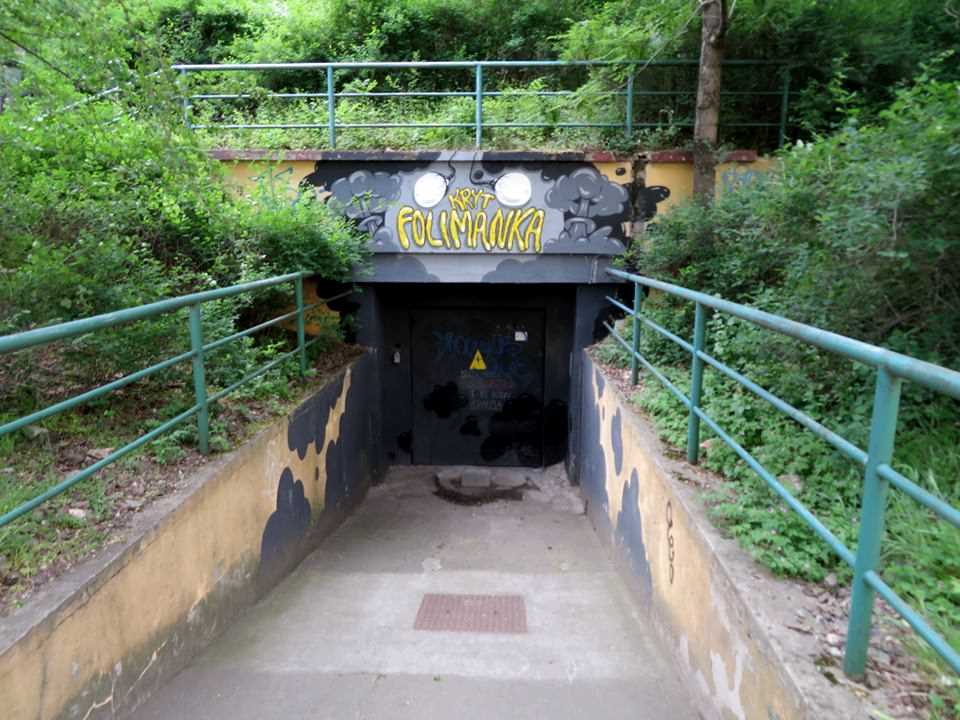
The main entry, a rather forbidding concrete and metal affair, has a yellow graffiti sign saying “Kryt Folimanka” next to stylized depictions of atomic blasts. It can be found near the intersection of Pod Karlovem and Sarajevská streets.
The complex of tunnels, with dormitory rooms for living, showers, medical facilities, morgues and technical equipment to purify air and water, was built into the rocky cliff in the 1950s.
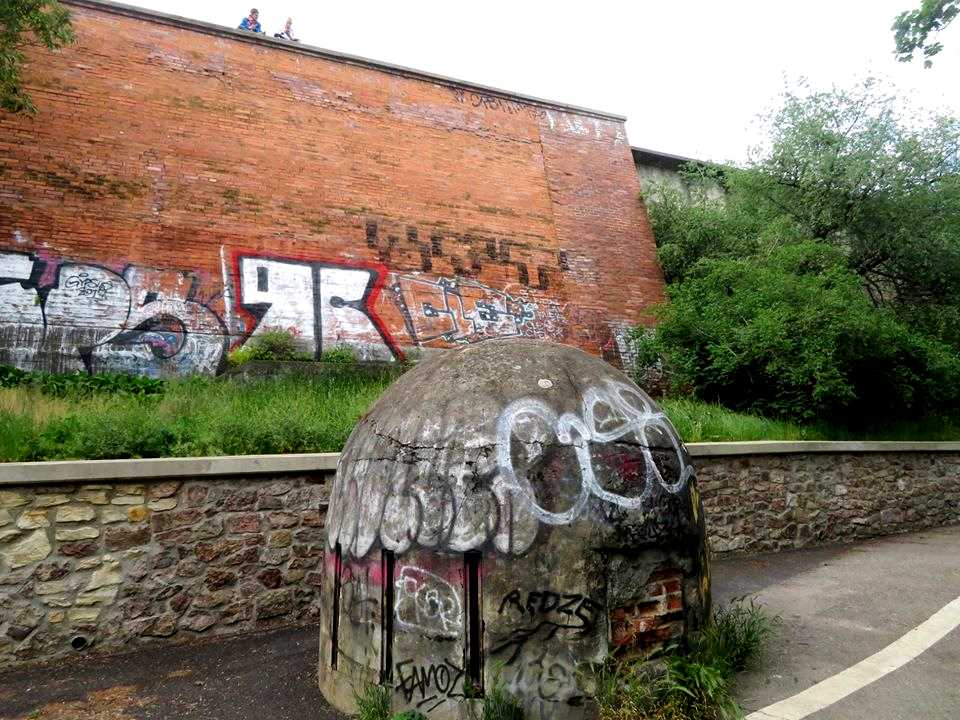
The complex is huge, and not all of it is open to the public. The tunnels still have cases of gas masks and other supplies in case the Cold War suddenly turned hot. Pipes and cables run along the ceilings, and sturdy metal doors can isolate different areas. The shelter’s interior covers 1,332 square meters can hold up to 1,260 persons.
Inside there is a large map of Prague 2, with the Czech word for “secret” crossed out. It shows every basement in the city district that was designated as a safe area.
Air from the domes, including the vandalized R2D2, went through a dust filtration system to remove any atomic particles. There is also a small concrete observation post peeking up into the park, similar to a periscope on a submarine.
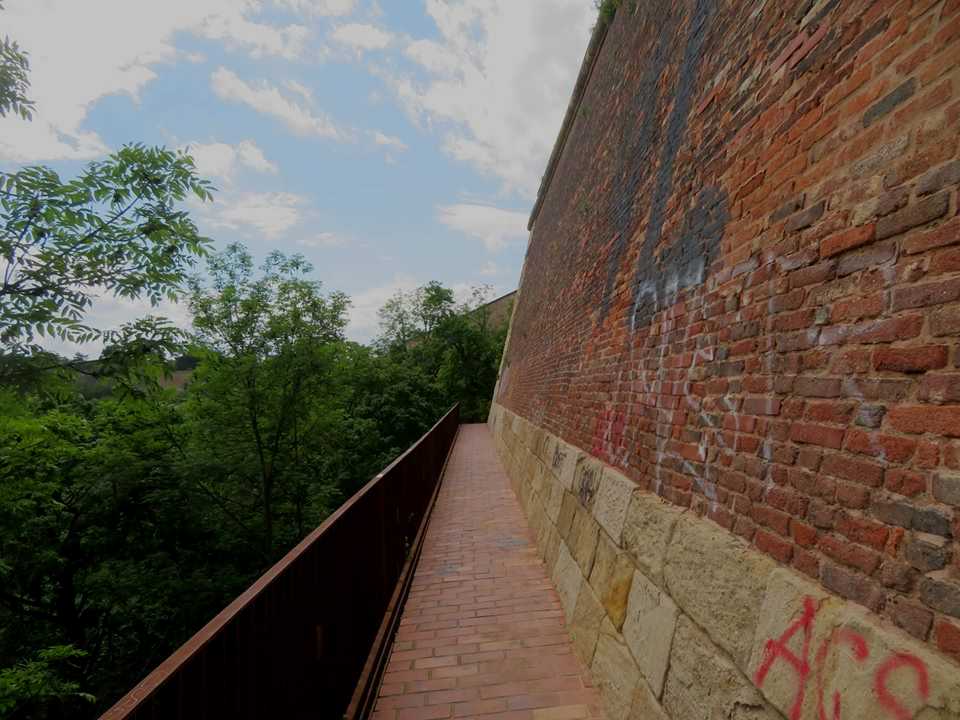
Many similar shelters are located in Prague but are either not open on a regular basis or open only for paid tours.
The fallout shelter isn’t the only defensive structure in the park. Going into the higher part of Folimanka, people encounter part of Prague’s historical city walls. These were first built to protect New Town, and were started around 1350, when New Town was actually new. They were expanded and strengthened several times up through the mid 1800s.
The section called Bastion XXXI, or Bastion U Božích muk (At the Passion of Christ) was renovated in 2010–11 to make it accessible to the public while preserving much of the original character. A metal spiral staircase on the north side of the wall leads to an opening that allows entry into Folimanka, via a steep staircase.
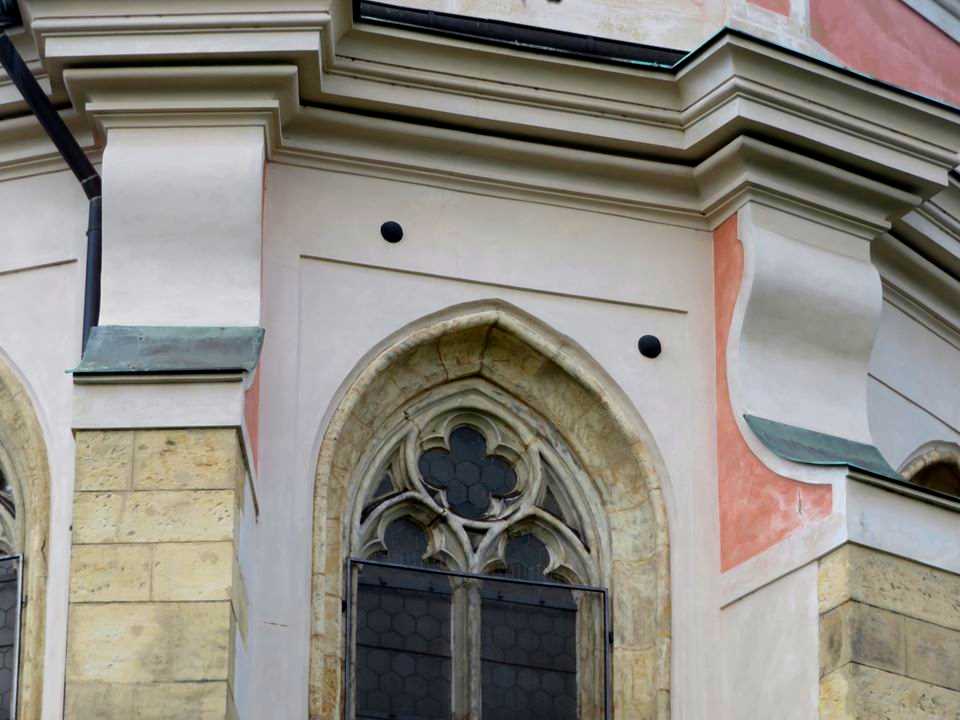
Entry to Folimanka from the wall is also possible near the triple-domed Church of the Assumption of the Virgin Mary and St. Charles the Great, usually called the Karlov church for short. The wall extends all along the back of the park, ending at Na Slupi by Ostrčilovo náměstí. Sadly, at that end it falls victim to graffiti.
While modern people may not see the need for a defensive wall, it did serve its purpose. If one looks at the exterior of the Karlov church, one can see cannonballs still embedded there. These date to the Siege of Prague in May and June 1757, when Prussian artillery fired across the Nusle Valley. It took place during the Seven Years’ War.
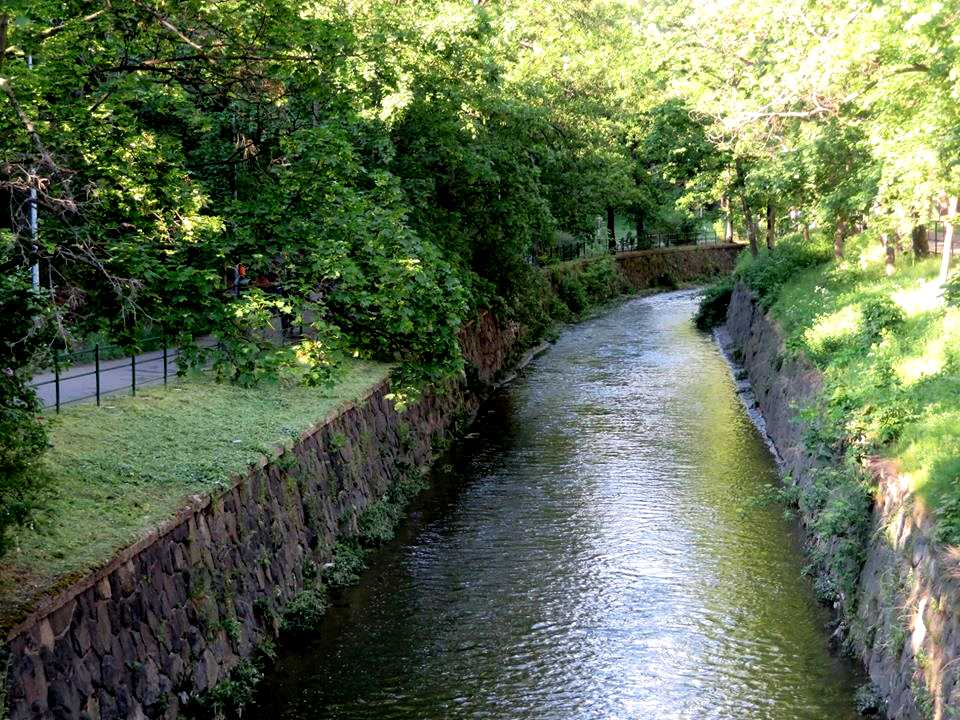
The park’s last remaining feature is the Botič stream, which makes the park’s southern border and is crossed be several small pedestrian bridges. The 34-kilometer stream starts in Central Bohemia, with 21 kilometers running through Prague before it empties into the Vltava.
The stream is refereed to in the Czech national anthem, “Kde domov můj” (Where My Home Is), in the line “water roars across the meadows.” The anthem comes from the play Fidlovačka aneb Žádný hněv a žádná rvačka (Fidlovačka, or No Anger and No Brawl), which was set in the Nusle Valley among various working-class people.












 Reading time: 7 minutes
Reading time: 7 minutes 




























